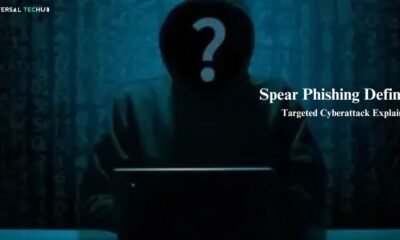Phishing attack
What is Spear Phishing and How You Can Identify This Scam?

In recent years, various forms of cyber attacks have emerged, with spear phishing becoming increasingly prevalent. You’ll encounter this term frequently, which emphasizes the importance of understanding the concept and potential risks involved. This article delves into the fundamental concepts, explains how it functions, and provides preventive measures against spear phishing attacks.
What is Spear Phishing?
Spear phishing is a targeted cyber attack that focuses on specific individuals or organizations to steal sensitive data, infect devices with malware, or even trick people into transferring money. Spear phishing is more personal and sophisticated, which is designed to convince people that the scam is from a trusted source.
Attackers use methods like fake emails, text messages, phone calls, and social media to scam the people. Cybercriminals behind spear phishing invest time researching their victims – whether it’s personal details or professional information – to make highly convincing messages.
Spear phishing is a major threat. According to IBM’s Cost of a Data Breach Report, phishing is the leading cause of data breaches. Spear phishing, in particular, is shockingly effective. A report by Barracuda, analyzing over 50 billion emails, found that even though spear phishing made up less than 0.1% of emails, it was responsible for 66% of successful data breaches.
And it’s costly. While a standard phishing breach averages $4.76 million, spear phishing can escalate to a whopping $100 million in damages.
Spear Phishing vs. Phishing
To understand how do spear phishing attacks differ from standard phishing attacks, consider the level of personalization involved. Phishing targets a broad audience, prioritizing quantity over quality. In contrast, spear phishing aims to produce specific quality results. It tailors each email closely to achieve this with one target subject in mind. This smarter predictability not only increases the effectiveness of spear phishing messages but also reduces the likelihood of detection.
How Does Spear Phishing Differ from Regular Phishing?
At its core, phishing is a broad category of cyber attack, where criminals try to deceive anyone they can, typically through mass, generic messages. Think of it as a numbers game – hackers send out thousands of fake emails hoping to catch a few victims.
On the other hand, spear phishing is focused on a group of people. Criminals choose their targets very carefully. Those people are high-level employees, like company executives or regional managers. People who have access to valuable assets. These attacks are highly tailored, based on in-depth research into the victim’s personal and professional life.
The implementation of a spear phishing attack
The usual spear phishing attack follows a very careful plan. Initially, the attacker identifies and studies their target. They then send an email that appears to originate from a familiar source, such as a colleague or a trusted Web site. This email sequence generally shows a tendency toward urgency and/or trepidation to get the reader to rush into action.
Indeed, the system may request the recipient to confirm their login details or enable a new security feature. Once the attacker receives this information, they can access their victims’ accounts, potentially leading to devastating consequences.
Apple ID phishing scam targets users with fake suspension emails
Technological Aspects of Spear Phishing
We use specially designed software tools to gather information from social profiles, professional details, and other public sources. These resources can then be mixed and matched to send personalized messages in spear phishing email attacks. Most valuable targets will already be using their e-mail address online rather than through company-provided systems. These two servers are passing data back and forth, but neither the sender nor the recipient can verify its legitimacy or detect any modifications during transit.
Spear-phishing attacks also involve email spoofing attempts. That is, attackers manipulate the email header to represent a trusted source even when it is not. In zero-day attacks, the most advanced aspects of spearphishing technology, attackers use yet unknown security flaws in software. These flaws have the potential to either steal data or grant access to credentials.
Spear Phishing Examples and Tactics
Spear phishing takes personalization to the next level. Here are some common examples:
Shared Interests
An attacker might target someone with known hobbies. For example, if you’re a wine enthusiast and a friend of Bob, the attacker might send a fake email claiming Bob recommended a wine shop, with a link that takes you to a malicious website. The email feels authentic because it taps into your known interests.
Taking Identity of Trusted Brands
Cybercriminals often steal name of big companies like PayPal, Amazon, or Microsoft. By pretending to be a company you trust. They ask you to click on links or download attachments that are safe for you to open.
Lottery Scams
Imagine getting an email from a “well-known” company like Google or Microsoft. The email claims you’ve won a prize. But there’s a catch. You need to pay a small fee to claim your big win. This classic scam is often successful because the message looks safe when you first see it. Especially, when it’s from a brand you trust.
These are just a few ways spear phishing attempts to exploit human nature. They use what we know and trust against us. Unlike typical phishing scams, which blast out to as many targets as possible, spear phishing zeroes in on you, making it far more dangerous and difficult to spot.
How to Know It’s a Spear Phishing Scam
Protecting yourself from spear phishing is easy. Just know what scammers are looking for. Phishers are experts at making their scam look real. But there are always big signs. Here are some red flags of spear phishing to watch out for when you receive an email:
A Sense of Urgency
Phishers often create a sense of panic to get you to act fast. As example, the email can say something like.
“Your urgent attention is needed!”
“Your account is at risk.”
“Please provide login details as soon as possible to avoid your account suspension.”
They want you to make a quick decision without thinking about it.
Playing With Emotions
The language in the email might emotionally hit you. It is fear, guilt, or even excitement. They might say something like,
“If you don’t respond, you’ll lose access to your account!”
“Your friend needs help urgently – please send money now.”
These ways pressure you into taking action without thinking.
Suspicious Email Address
Always check the sender’s email address. If it seems off, like a domain that doesn’t quite match the company it claims to be from, or an unusual name format (e.g., “support123@company.com”), proceed with caution.
Spelling and Grammar Mistakes
Big businesses with a name. Especially big ones like banks and others that take care about everything. They make sure their emails are professional. If you notice mis-spelling or grammar mistakes. It is a sign that the email is from a scammer.
Requests for Sensitive Information
If the email asks for personal details. Maybe your password, social security number, or credit card information . Especially in a message – this is a major red flag. Trustworthy companies never ask for such information through email.
Suspicious Links
Hover your mouse over any links in the email (without clicking) to see where they lead. If the link looks strange, doesn’t match the company’s website, or the formatting seems off, it’s probably a phishing attempt.
Unexpected Attachments
Be wary of any email that includes attachments you weren’t expecting, especially if the file name seems odd or out of place. Phishers often hide malware in attachments to gain access to your device.
Pretexting
This is when the email creates a fake scenario to get you to act, like saying your login credentials are about to expire and you need to reset them immediately using a link in the email.
When you know about these things. You can avoid a spear phishing scam. Always double-check any email that seems suspicious. Don’t click links, download attachments, or share sensitive information. Stay attentive, and always trust your guts!
How to Protect Yourself from Spear Phishing: Expert Tips You Need to Know
Spear phishing is getting more sophisticated, making it harder to spot and prevent. Cybercriminals write their attacks so well. Only one small slip-up. And you’ll have big consequences. Whether you’re an individual. Or part of a business or non-profit. It’s important to be safe in guarding against these types of attacks. While there’s no right way to stop spear phishing. But there are a lot of steps you can take to reduce your risk. Let’s see what experts say on spear phishing:
Stay Vigilant with Email Checks
Regularly review your inbox for suspicious emails, especially those asking for password resets or containing unfamiliar links. If anything seems off, it’s better to be cautious than sorry.
Use a VPN for Extra Security
A VPN (Virtual Private Network) adds an extra layer of protection to your online activity by encrypting your data. This makes it much more difficult for spear phishing criminals to get your information.
Run Anti-virus Software
Make sure your anti-virus software is running and regularly updating. It’s your first line of defense against bad attachments, links, or downloads. Which might come through spear phishing emails.
Verify Email Sources
Before taking any action, double-check the sender’s email address. If it looks even slightly suspicious, don’t trust it. It’s always better to take precautionary steps than to fall victim to a cyber scam.
Check URLs Before Clicking
Always hover over links in emails to see where they lead. If the URL doesn’t look right or doesn’t match the official website, avoid clicking. Rather, type the web address into your search engine manually.
Go Directly to Websites
Instead of clicking on a link in a suspicious email, open a new browser window and go directly to the organization’s website. That way, you’ll avoid potential malicious websites designed to steal your data.
Keep Software Updated
Make sure your operating system, apps, and any security software are up to date with the latest techs. This helps protect you from known threats that cybercriminals may use.
Limit Your Online Personal Info
The more personal details you share online. The easier it is for phishers to make a convincing attack. Review your social media profiles. Delete anything too personal, and tighten your privacy settings.
Use a Password Manager
A password manager can securely store and generate complex passwords for all your accounts, which reduces the risk of using weak or repeated passwords that hackers can easily guess.
Use Multi-Factor Authentication (MFA)
Whenever easy, set up multi-factor authentication (MFA) or biometric authentication. This adds an extra layer of protection to your accounts. Which makes it harder for phishers to gain access.
Verify When You’re in Doubt
If you receive an email that asks for sensitive information. And you are not sure if it is valid or not. Don’t reply directly. Contact the organization or person directly through official channels to confirm whether the request is real.
Train Your Team
For businesses, implementing regular security awareness training for employees is key. Educate them on recognizing phishing attempts and how to respond safely.
Phishing Simulations for Employees
Regular phishing simulations are a great way for companies to test how well their employees can spot spear phishing emails in a real-world context. It’s a proactive way to boost awareness and preparedness.
By following these tips and remaining cautious, you can reduce the chances of falling victim to a spear phishing attack. Staying informed and vigilant is your best defense against these increasingly sophisticated threats.
Real Examples of Spear Phishing: Tactics and Impact
Here are some well-known spear phishing attempts that show the tactics used and the consequences suffered by the victims:
- Cybercriminal “Evaldas Rimasauskas” perpetrated the $100 million scam at Google and Facebook between 2013 and 2015. A huge financial loss occurred as a consequence of his coordinated business email breach (BEC) operation, in which he used spear phishing to send fraudulent invoices.
- Microsoft has issued a warning about Russia’s planned spear phishing effort against Ukraine in 2022. The campaign aims to target Ukrainian institutions crucial to national security and emergency response.
- CEO Fraud Hits Ubiquiti Networks Inc.: In 2015, Ubiquiti lost more than $40 million due to CEO fraud, which occurred when workers were tricked into transferring money to fake accounts.
- In Franklin, Massachusetts, a municipality embezzled more than half a million dollars from a town employee by using social engineering to obtain secure login credentials.
- Customer Credential Harvesting at Epsilon: In 2011, an email operation employee was the subject of a spear phishing attempt that sought to steal customer credentials by sending them malware-laden emails.
- Security Breach at RSA: In 2011, RSA was the victim of a spear phishing attempt that pretended to be an email recruiting message. The installation of malware by an employee led to the unauthorized theft of data.
- Chinese Army Targeted Alcoa: In 2008, there were claims that the Chinese army used spear phishing to target Alcoa, infiltrating the emails of key officials to obtain crucial information.
Phishing, Spear Phishing, and Whaling: A Comparison
In order to develop effective security methods, it is essential to understand the differences between the different kinds of cyberattacks, including What is spear phishing in cyber security?. Different types of social engineering attacks, such as phishing, spear phishing, and whaling, aim to trick people and businesses in different ways.
Phishing
Phishing is a cyberattack where fraudsters impersonate legitimate businesses or colleagues to trick victims into revealing personal details, financial information, or login credentials. Both businesses and consumers are common targets of phishing efforts. These attacks typically aim to reach as many individuals as possible to exploit any vulnerabilities. For example, a phishing email might appear to come from a bank, asking the recipient to click on an unsecured link to confirm their account details.
Spear Phishing
Spear phishing is a more targeted form of phishing. Attackers customize their emails or messages by using information about the victim to make the attack more convincing. Unlike phishing, which targets a broad audience, spear phishing focuses on specific individuals or groups within an organization. This type of attack seeks to gain unauthorized access to sensitive data or systems by deceiving the target. For instance, a CFO might receive an urgent request for wire transfer instructions in an email that appears to come from a trusted colleague.
Whaling
Whaling is a specialized form of spear phishing that targets high-profile individuals, such as CEOs, public figures, or senior executives. These individuals are often chosen due to their access to crucial information or financial resources. Whaling attacks require detailed preparation and personalization to successfully deceive these influential people. The ultimate goal is to manipulate them for malicious purposes or to gain access to vital assets. For example, a CEO might receive a carefully crafted email from someone posing as a law enforcement official requesting sensitive company data.
Defending Your Business from Spear Phishing Attacks
Cybersecurity is not just about preventing attacks but being prepared when you inevitably face one. Defending against spear phishing and other threats requires implementing a multi-layered defense strategy. However, even the best defenses won’t be enough without knowing how to handle a breach and mitigate damage. Here are key strategies to strengthen your defenses:
1. Educating Employees About Cybersecurity Threats
Training your employees is one of the most important steps in defending against spear phishing. If your team isn’t aware of potential threats, they are more likely to fall for them. Ensure that employees understand the risks, how to stay safe, and what warning signs to look for. Introduce training on verifying information before making changes to financial accounts or sharing sensitive data.
2. Email Security
To prevent phishing emails from reaching your inbox, leverage comprehensive email security tools. Many of these tools are designed to detect and block phishing attempts before they reach employees. Even if you use Microsoft 365, additional security features are available but require activation to enhance protection.
3. Two-Factor Authentication (2FA)
Password guessing remains a common attack method. However, relying solely on passwords is no longer sufficient. Two-factor authentication (2FA) adds an extra layer of security by requiring a second form of verification, such as a text message or authentication app. If you receive an alert from your 2FA system that you didn’t trigger, it’s a sign that unauthorized access is happening, and you should act immediately.
4. Regular Updates
Keeping software and systems up to date is crucial to avoid leaving security vulnerabilities open for exploitation. Cybercriminals often target known weaknesses in outdated software. Regularly updating your company’s systems ensures that known security flaws are patched, reducing the risk of exploitation.
5. Incident Response Plan
A solid incident response plan is essential for quickly addressing a spear phishing attack when it happens. This plan should outline steps for detecting, containing, and mitigating damage from phishing attacks. Regularly review and update the plan to ensure that your organization is always ready to respond.
6. Stay Informed and Aware
Knowing what spear phishing is isn’t enough; you need to be able to recognize the tactics used by cybercriminals. Stay informed about the latest phishing techniques, and make sure your team is always aware of evolving threats. Regular training, awareness campaigns, and simulated phishing exercises can help employees spot suspicious activity.
By implementing these defenses and fostering a culture of awareness, you can minimize the risk of spear phishing attacks and protect your business from potential harm. Stay vigilant, stay educated, and protect your assets.
Conclusion
Throughout our education on spear phishing vs phishing attacks and identifying their signs, we have learned some crucial distinctions between standard phishing and spearphishing. Take this away with you for a second.
By replacing standard training techniques like simulated online big phishes/run-through after phishing run-through and ensuring that people get support in real-time as their skills are being taught to them, every staff member can learn those important distinctions online responsible for protecting against these external threats. When you stay up-to-date and implement a comprehensive spear phishing protection program, you can ensure that everyone you know is safe from cyber spearphishing.
Seeking expert cybersecurity advice.
Working together with the cybersecurity specialists in Marietta and Alpharetta can offer another line of protection against spear phishing. Work together with our Atlanta-based cybersecurity team to beef up your defenses. We provide personalized insights into current cyber dangers and advice on how to keep your sensitive data safe.
Read More:
-

 Social engineering attack8 months ago
Social engineering attack8 months agoBaiting Attacks Explained: A Closer Look at Cyber Threat Tactics
-

 Social engineering attack7 months ago
Social engineering attack7 months agoWhat are Social Engineering Attacks – A Complete Guide to Cyberattacks Prevention
-

 Social engineering attack8 months ago
Social engineering attack8 months agoSpear Phishing Attack: A Targeted Cyber Threat
-
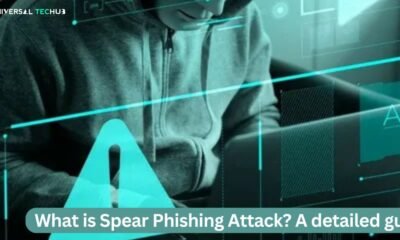
 Social engineering attack8 months ago
Social engineering attack8 months agoWhat is spear phishing attack? A detailed guide
-
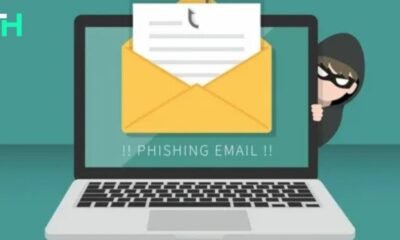
 Phishing attack6 months ago
Phishing attack6 months agoWhat Are Phishing Emails? A guide for you
-
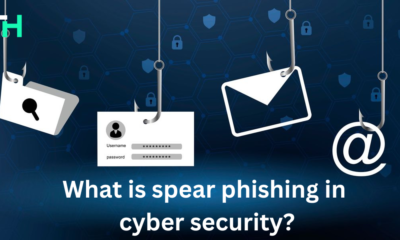
 Social engineering attack8 months ago
Social engineering attack8 months agoWhat is spear phishing in cyber security?
-
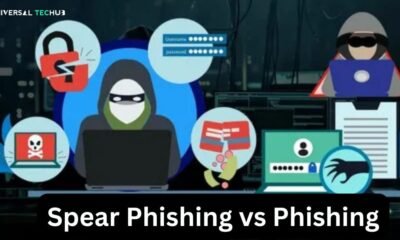
 Social engineering attack8 months ago
Social engineering attack8 months agoSpear phishing vs phishing: Understand the Risks
-
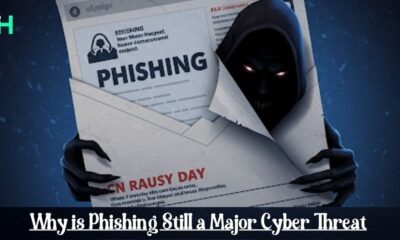
 Phishing attack3 months ago
Phishing attack3 months agoWhy is Phishing Still a Major Cyber Threat? Everything You Need to Know




